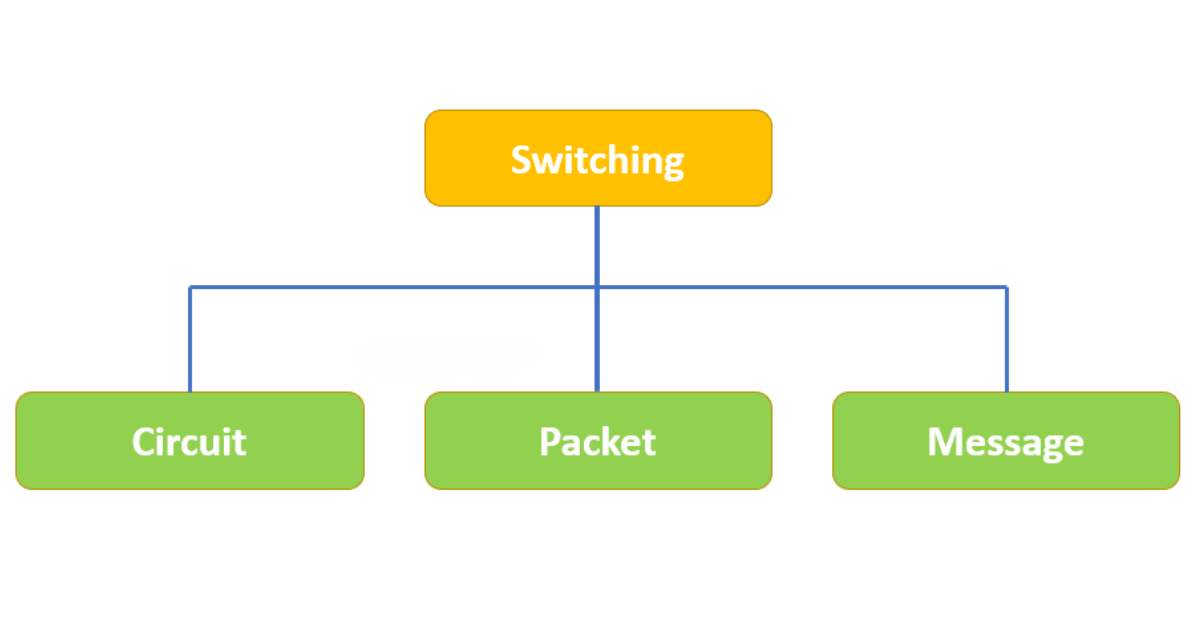In today’s hyper-connected world, where data flows like an intricate web, efficient network communication is paramount.
Enter switching – the pivotal mechanism that routes data seamlessly between networks, ensuring information reaches its destination without a hitch.
But what exactly is switching, and why is it so crucial? Let’s dive in and demystify this backbone of modern networking.
Switching, at its core, is the process of transferring data packets from a source device to a destination device through a series of interconnected networks.
It acts as the traffic controller, deciding the optimal path for data transmission when multiple routes exist within a larger network infrastructure.
Without this intelligent routing system, our interconnected world would grind to a halt, unable to handle the massive flow of information we’ve become accustomed to.
Switching 101 – The Three Fundamental Techniques
While the concept of switching may seem straightforward, the techniques employed to achieve it are diverse and tailored to specific communication needs.
Let’s explore the three fundamental switching techniques that form the bedrock of modern networking:
Circuit Switching: The Traditional Telephonic Approach
Imagine the good old days of landline telephones – when you picked up the receiver, a dedicated physical connection was established between you and the person on the other end.
This principle of a fixed, pre-determined path for communication is the essence of circuit switching.
In this technique, a dedicated channel (or circuit) is established between the sender and receiver before any data transmission can occur.
This channel remains reserved for the entirety of the communication session, ensuring uninterrupted and continuous data transfer.
Circuit switching was the backbone of early analog telephone networks and is still used in scenarios where continuous, real-time communication is paramount, such as traditional voice calls or video conferencing.
Advantages of Circuit Switching:
- Guaranteed data transmission without interruptions or delays
- Ideal for continuous, unbroken communication sessions
- No waiting time at each switch, as devices are directly connected
Disadvantages of Circuit Switching:
- Inefficient use of bandwidth and system resources, as the dedicated path is reserved even during idle periods
- Time-consuming process of establishing the end-to-end path before data transfer can begin
- Not suitable for handling modern, bursty data traffic like video streaming or web browsing
- Message Switching: The Store and Forward Method
Unlike circuit switching, which establishes a dedicated path, message switching takes a more flexible approach – think of it as a digital relay race.
In this technique, there is no need for a pre-established end-to-end connection between the sender and receiver.
Instead, the message (or data) is transmitted in its entirety from the source node to the first available message switching node.
This intermediary node then stores the complete message on its disk and forwards it to the next node, repeating the process until the message reaches its final destination.
Message Switching:
┌───────────┐ ┌───────────┐ ┌───────────┐
│ Source │ │ Switching│ │Destination│
│ Node ├───→ │ Node ├───→ │ Node │
└───────────┘ └───┬───────┘ └───────────┘
│
└─────────────────────────→ Store and Forward
Message switching is particularly robust, as it doesn’t rely on a continuous connection between nodes.
It’s not well-suited for real-time applications like video or voice, as the store-and-forward process can introduce delays.
Advantages of Message Switching:
- High reliability, as each node confirms message receipt before forwarding
- Robust, as communication can continue even if some nodes are unavailable
- Cost-effective, as it doesn’t require dedicated end-to-end connections
- Ability to prioritize messages based on importance or urgency
- Packet Switching: The Data Packetization Approach
In the modern era of high-speed internet and multimedia communication, packet switching reigns supreme.
This technique takes a divide-and-conquer approach to data transmission, breaking down large messages into smaller units called packets.
Each packet contains essential information like the source and destination addresses, as well as sequence numbers to ensure proper reassembly at the receiving end.
These packets are then routed independently through the network, taking the fastest available path to their destination.
Packet Switching:
┌───────────┐ ┌───────────┐ ┌───────────┐
│ Source │ │ Switching │ │Destination│
│ Node ├───→ │ Node ├───→ │ Node │
└───────────┘ └───┬───────┘ └───────────┘
│
└─────────────────────────→ Shortest Path
Packet switching’s ability to dynamically route data packets along multiple paths simultaneously makes it incredibly efficient, flexible, and robust – ideal for handling the diverse and bursty nature of modern network traffic.
Advantages of Packet Switching:
- Efficient use of network resources by transmitting multiple packets concurrently
- Ability to handle various data types (text, voice, video) on the same network
- Robust, as packets can be re-routed if a path becomes congested or unavailable
- Highly scalable, capable of accommodating growing numbers of users and devices
- Put Your Switching Knowledge to the Test
Now that you’ve grasped the fundamentals of switching techniques, it’s time to put your knowledge to the test.
Let’s dive into some real-world scenarios and identify the ideal switching technique for each situation:
Scenario 1:
You’re setting up a video conferencing system for your company, where multiple participants will be engaged in real-time, uninterrupted communication.
Which switching technique would be most suitable?
Scenario 2:
Your organization needs to transfer large files securely between remote offices, without the need for real-time communication.
Reliability and cost-effectiveness are top priorities. Which switching technique aligns best with these requirements?
Scenario 3:
You’re designing a network to support a high-traffic e-commerce website, where customers will be browsing products, streaming videos, and placing orders simultaneously.
Which switching technique can handle this diverse and bursty data traffic efficiently?
Think through each scenario carefully, considering the advantages and disadvantages of circuit switching, message switching, and packet switching we discussed earlier.
The Battle of the Switching Techniques
While each switching technique has its unique strengths and applications, it’s crucial to understand their key differences to make informed decisions about network architecture and data transmission strategies.
Let’s break it down:
| Characteristic | Circuit Switching | Message Switching | Packet Switching |
| Path Establishment | Dedicated end-to-end path established before data transfer | No pre-established path required | No dedicated path; packets take fastest route |
| Bandwidth Utilization | Inefficient; dedicated path reserved even during idle periods | More efficient; no dedicated paths required | Highly efficient; multiple packets transmitted concurrently |
| Real-time Suitability | Ideal for continuous communication like voice calls | Not suitable; store-and-forward can introduce delays | Suitable for real-time and bursty traffic |
| Robustness | Vulnerable to node failures, as dedicated path is disrupted | Robust; communication can continue if some nodes are unavailable | Robust; packets can be re-routed if a path fails |
| Scalability | Limited scalability due to dedicated path requirements | Scalable, as no dedicated paths are required | Highly scalable; can accommodate growing traffic and devices |
As you can see, while circuit switching excels in continuous, real-time communication, packet switching emerges as the more versatile and efficient technique for modern network traffic.
Its ability to handle diverse data types, dynamically route packets, and scale seamlessly has made it the predominant choice for internet communication and data transmission.
The optimal switching technique ultimately depends on your specific requirements – whether you prioritize real-time communication, reliability, cost-effectiveness, or a combination of factors.
By understanding the strengths and limitations of each technique, you can make informed decisions to optimize your network’s performance and ensure efficient data transmission.
Final Thoughts
In the intricate tapestry of modern networking, switching acts as the masterweaver, deftly guiding data across interconnected pathways.
By mastering the art of switching techniques – be it the dedicated circuits of traditional telephony, the store-and-forward relay of message switching, or the dynamic packetization of packet switching – you unlock the power to craft efficient, robust, and scalable networks tailored to your unique communication needs.
Whether you’re a network administrator, a budding technologist, or simply someone who appreciates the marvels of modern connectivity, understanding switching is a stepping stone to unlocking the full potential of our hyper-connected world.
So, embrace this knowledge, experiment with different techniques, and pave the way for seamless data transmission that keeps our digital universe thriving.
Remember, the key to network efficiency lies in your hands – choose your switching technique wisely, and let the data flow like a well-orchestrated symphony.











